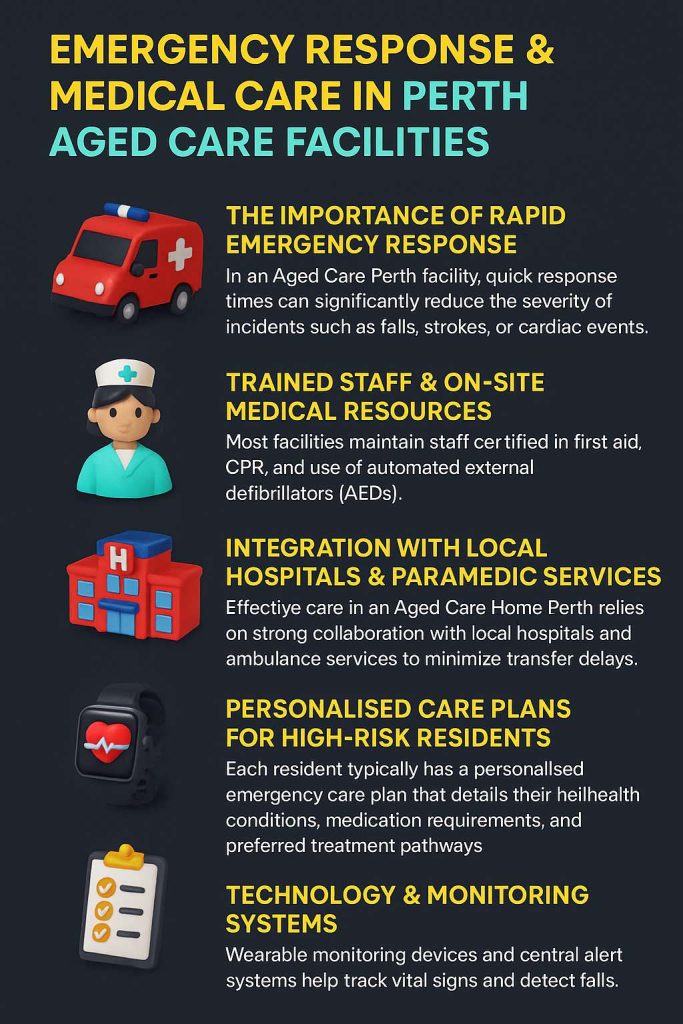Ensuring timely emergency response & quality medical care in aged care facilities is critical to safeguarding residents’ wellbeing. Perth’s aged care sector has established specific protocols, staff training requirements, and partnerships with healthcare providers to ensure that residents receive prompt attention in emergencies.
The Importance of Rapid Emergency Response
In an Aged Care Perth facility, quick response times can significantly reduce the severity of incidents such as falls, strokes, or cardiac events. Facilities typically invest in 24/7 on-site staff, advanced monitoring systems, and clear communication channels with local ambulance services. These measures are designed to reduce delays and improve survival and recovery rates.
Trained Staff & On-Site Medical Resources
Most facilities maintain staff certified in first aid, CPR, and use of automated external defibrillators (AEDs). Continuous training ensures carers can assess urgent situations effectively. Some facilities also employ or have access to registered nurses and visiting general practitioners to handle non-critical medical needs on-site, reducing unnecessary hospital transfers.
Integration with Local Hospitals & Paramedic Services
Effective emergency care in an Aged Care Home Perth relies on strong collaboration between the facility, local hospitals, and ambulance services. Many homes have pre-arranged pathways with nearby hospitals to expedite admissions, particularly for residents with chronic illnesses or complex care needs. This integration ensures smoother communication and minimises delays during transfers.

Personalised Care Plans for High-Risk Residents
Each resident typically has a personalised emergency care plan that details their health conditions, medication requirements, and preferred treatment pathways. These plans are vital in urgent scenarios as they provide attending staff and medical professionals with critical information, enabling more precise interventions.
Technology & Monitoring Systems
Many Perth facilities have adopted wearable monitoring devices and central alert systems to track vital signs and detect falls. These technologies help staff respond more quickly to sudden changes in a resident’s condition and provide accurate data to medical responders.
Ongoing Training & Compliance
Compliance with national aged care quality standards and regular emergency drills are integral to maintaining readiness. These drills ensure staff remain confident and competent in responding to different emergencies, from medical incidents to fire and evacuation situations.
Conclusion
Robust emergency response procedures, well-trained staff, hospital partnerships, and personalised care plans are fundamental to ensuring residents’ safety in aged care facilities across Perth. As these facilities continue to adopt advanced technology and improve collaboration with emergency services, they strengthen their ability to provide timely and effective medical care during critical situations.
